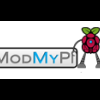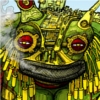
Base roulante avec bras
#261

Posté 25 mai 2012 - 09:09
Donc après mes calculs cela me ferais ente 10 et 15 Euros de taxes pour tout les composants. je pense que cela est raisonnable , je m'attendais a un peu + .
Cordialement Dylan.
#262

Posté 25 mai 2012 - 01:41
Supposons que :
le prix d’achat soit de 200 euros
les frais de port et d’assurance jusqu’à l’entrée dans l’UE soient de 30 euros
les frais de livraison à domicile soient de 20 euros.
Le taux des droits de douane soit de 2 % et celui de la TVA de 19,6 %.
Base de calcul du droit de douane (ou « assiette ») : 200 + 30 = 230 euros
Montant du droit de douane : 230 x 2 % = 4,60 euros. Cette somme est arrondie à l’euro le plus proche, en application des règles de la comptabilité publique.
Base de calcul de la TVA (ou « assiette ») : 200 + 30 + 5 + 20 = 255 euros
Montant de la TVA : 255 x 19,6 % = 49,98 euros, arrondis à 50 euros compte tenu de la règle citée ci-dessus.
Cordialement Dylan.
#263

Posté 27 mai 2012 - 07:20
Ça y' est j'ai mon multimètre , mais j'ai un petit problème quand je branche le moteur et le multimètre , celui ci m'affiche zéro. Âpres quelques essais j'ai compris qu'il fallait appuyer sur le bouton de la télécommande pour que le moteur tourne , mais il affiche toujours zéro. Des que je relâche le bouton et que le moteur commence a arrêter de tourner , la mesure en Ampere s'affiche puis redescend vite a zéro puisque il n'ya plus de courant qui passe . Comment faire ? retirer le moteur et le brancher a part sur une pile 9V ?
Cordialement Dylan.
#268

Posté 28 mai 2012 - 06:59
Geek Maxou , j'ai fais comme tu m'as dis , j'ai appuyer sur le bouton de ma télécommande et l'écran afficher plusieurs mesures : 1.5 / 1.7 / 1.6 / 1.7 / 1.7 (le slash"/" sépare les différentes mesures)
A mon avis c'est 1.7 , car il apparait plus souvent. Donc le moteur utilise 1.7 Ampères , c'est ca ?
Cordialement Dylan.
#269

Posté 28 mai 2012 - 07:04
Déjà, il y a un pic de consommation au départ. (Il faut plus d'énergie pour démarrer, pour casser l'inertie) Et ça dépend de la charge aussi.
Mais 1,7A à vide, c'est déjà beaucoup... C'est quoi comme moteur ?
[edit: C'est les servomteurs de ce lien ? Il est mis "5. Current: < 1000mA". Mais bon, c'est ebay.
Esprit
*Rêve d'en caser un dans un robot*
#270

Posté 28 mai 2012 - 07:11
Voila une video qui montre une partie de la construction de ce bras robotique , voir de 5"05 jusqu'à 5"55
Cordialement Dylan.
#271

Posté 28 mai 2012 - 07:26
cordialement Maxou
A.R.M.I
Autonomous Robotics Mechanics Intelligent
#273

Posté 28 mai 2012 - 12:13
Les 1,7A, tu mesures ça à quel moment précisément ? Quand le moteur tourne depuis un moment ? Au démarrage ?
À vide ? En charge ?
Ça me semble vraiment beaucoup pour un moteur si petit.
je me suis tromper de sens et je l'avais mal brancher, maintenant la le multimètre m'affiche a présent : 0.14/0.13/0.14/0.13/0.14
Mais voila comment je fais :
le - du moteur est connecter a la broche - de l'alimentation
le + du moteur est relie au multimètre(au fil noir du multimètre plus précisément)
le + de l'alimentation est relie au fil rouge du multimètre.
Ensuite j'appuie sur le bouton de la télécommande et l'écran m'affiche 0.13
Voila une petite vidéo pour voir
Cordialement Dylan.
#275

Posté 28 mai 2012 - 02:00
Oui, si tu as bien configuré ton ampèremètre, c'est 130mA.
Mais on ne voit pas très bien sur la vidéo. Dans tous les cas, ça semble plus proche de la réalité que 1,7A.
Esprit
*Rêve d'en caser un dans un robot*
#277

Posté 28 mai 2012 - 07:08
Cordialement Dylan.
#278

Posté 04 juin 2012 - 01:51
Voila apres un peu de temps je reviens avec mes codes ( enfin une grande partie
Pour ma pince :
int baseMoteurEnablePin = 22;
int baseMoteurPin1 = 2;
int baseMoteurPin2 = 3;
int epauleMoteurEnablePin = 23;
int epauleMoteurPin1 = 4;
int epauleMoteurPin2 = 5;
int coudeMoteurEnablePin = 24;
int coudeMoteurPin1 = 6;
int coudeMoteurPin2 = 7;
int poigneeMotorEnablePin = 25;
int poigneeMotorPin1 = 8;
int poigneeMotorPin2 = 9;
int pinceMotorEnablePin = 26;
int pinceMotorPin1 = 10;
int pinceMotorPin2 = 11;
// set a variable to store the byte sent from the serial port
int incomingByte;
void setup() {
// set the L293D pins as outputs:
pinMode(baseMoteurPin1, OUTPUT);
pinMode(baseMoteurPin2, OUTPUT);
pinMode(baseMoteurEnablePin, OUTPUT);
digitalWrite(baseMoteurEnablePin, HIGH);
pinMode(epauleMoteurPin1, OUTPUT);
pinMode(epauleMoteurPin2, OUTPUT);
pinMode(epauleMoteurEnablePin, OUTPUT);
digitalWrite(epauleMoteurEnablePin, HIGH);
pinMode(coudeMoteurPin1, OUTPUT);
pinMode(coudeMoteurPin2, OUTPUT);
pinMode(coudeMoteurEnablePin, OUTPUT);
digitalWrite(coudeMoteurEnablePin, HIGH);
pinMode(poigneeMotorPin1, OUTPUT);
pinMode(poigneeMotorPin2, OUTPUT);
pinMode(poigneeMotorEnablePin, HIGH);
pinMode(pinceMotorPin1, OUTPUT);
pinMode(pinceMotorPin2, OUTPUT);
pinMode(pinceMotorEnablePin, OUTPUT);
digitalWrite(pinceMotorEnablePin, HIGH);
// start sending data at 9600 baud rate
Serial.begin(9600);
}
void loop() {
// check that there's something in the serial buffer
if (Serial.available() > 0) {
// read the byte and store it in our variable
// the byte sent is actually an ascii value
incomingByte = Serial.read();
// note the upper casing of each letter!
// diferrent lettre pour les directions.
if (incomingByte == 'Q') {
digitalWrite(baseMoteurPin1, LOW);
digitalWrite(baseMoteurPin2, HIGH);
}
if (incomingByte == 'W') {
digitalWrite(baseMoteurPin1, HIGH);
digitalWrite(baseMoteurPin2, LOW);
}
if (incomingByte == 'E') {
digitalWrite(epauleMoteurPin1, LOW);
digitalWrite(epauleMoteurPin2, HIGH);
}
if (incomingByte == 'R') {
digitalWrite(epauleMoteurPin1, HIGH);
digitalWrite(epauleMoteurPin2, LOW);
}
if (incomingByte == 'A') {
digitalWrite(coudeMoteurPin1, LOW);
digitalWrite(coudeMoteurPin2, HIGH);
}
if (incomingByte == 'S') {
digitalWrite(coudeMoteurPin1, HIGH);
digitalWrite(coudeMoteurPin2, LOW);
}
if (incomingByte == 'D') {
digitalWrite(poigneeMotorPin1, LOW);
digitalWrite(poigneeMotorPin2, HIGH);
}
if (incomingByte == 'F') {
digitalWrite(poigneeMotorPin1, HIGH);
digitalWrite(poigneeMotorPin2, LOW);
}
if (incomingByte == 'Z') {
digitalWrite(pinceMotorPin1, LOW);
digitalWrite(pinceMotorPin2, HIGH);
}
if (incomingByte == 'X') {
digitalWrite(pinceMotorPin1, HIGH);
digitalWrite(pinceMotorPin2, LOW);
}
// si O est envoyer les moteurs ne s'allumeront pas (OFF)
if (incomingByte == 'O') {
digitalWrite(baseMoteurPin1, LOW);
digitalWrite(baseMoteurPin2, LOW);
digitalWrite(epauleMoteurPin1, LOW);
digitalWrite(epauleMoteurPin2, LOW);
digitalWrite(coudeMoteurPin1, LOW);
digitalWrite(coudeMoteurPin2, LOW);
digitalWrite(poigneeMotorPin1, LOW);
digitalWrite(poigneeMotorPin2, LOW);
digitalWrite(pinceMotorPin1, LOW);
digitalWrite(pinceMotorPin2, LOW);
}
}
}celui ci est celui des servomoteurs(que m' a passer Seb03000) :
#include <SoftwareServo.h>
SoftwareServo servo1;
SoftwareServo servo2;
void setup()
{
servo1.attach(2);
servo1.setMaximumPulse(2200);
servo2.attach(4);
servo2.setMaximumPulse(2200);
Serial.begin(9600);
Serial.print("Ready");
}
void loop()
{
static int value = 0;
static char CurrentServo = 0;
if ( Serial.available()) {
char ch = Serial.read();
switch(ch) {
case 'A':
servo1.attach(2);
CurrentServo='A';
digitalWrite(2,LOW);
break;
case 'B':
servo2.attach(2);
CurrentServo='Z';
digitalWrite(2,HIGH);
break;
case 'Q':
servo1.attach(4);
CurrentServo='Q';
digitalWrite(4,LOW);
break;
case 'S':
servo2.attach(4);
CurrentServo='S';
digitalWrite(4,HIGH);
break;
case '0' ... '9':
value=(ch-'0')*20;
if (CurrentServo=='A')
{
servo1.write(value);
}
else if (CurrentServo=='B')
{
servo2.write(value);
}
break;
if (CurrentServo=='Q')
{
servo1.write(value);
}
else if (CurrentServo=='S')
{
servo2.write(value);
}
break;
}
}
SoftwareServo::refresh();
}Mais quand je compile j;ai une erreur qui apparait :Scelui ci est en Processing (le logiciel pour tout contrôler) :
// load the serial library for Processing
import processing.serial.*;
// instance of the serial class
Serial port;
// values to store X, Y for each button
int M1LX, M1RX, M2LX, M2RX, M3LX, M3RX, M4LX, M4RX, M5LX, M5RX;
int M1LY, M1RY, M2LY, M2RY, M3LY, M3RY, M4LY, M4RY, M5LY, M5RY;
// stores the width/height of the box
int boxSize = 64;
// 2 new instances of my arrow class
// also set an array of coordinates for each arrow
arrow myRightArrow;
int[]rightArrowxpoints={30,54,30,30,0,0,30};
int[]rightArrowypoints={0,27,54,40,40,15,15};
arrow myLeftArrow;
int[]leftArrowxpoints={0,24,24,54,54,24,24};
int[]leftArrowypoints={27,0,15,15,40,40,54};
// set the font
PFont myFont;
void setup() {
// screen size of the program
size(145, 455);
// set the coordinates of each button box
// base motor M1LX = Motor 1 Left X etc..
M1LX = 5;
M1LY = 25;
M1RX = 75;
M1RY = 25;
// Epaule motor
M2LX = 5;
M2LY = 115;
M2RX = 75;
M2RY = 115;
// Coude motor
M3LX = 5;
M3LY = 205;
M3RX = 75;
M3RY = 205;
// Poignee motor
M4LX = 5;
M4LY = 295;
M4RX = 75;
M4RY = 295;
// Main motor
M5LX = 5;
M5LY = 385;
M5RX = 75;
M5RY = 385;
// Tout droit
M5LX = 5;
M5LY = 475;
M5RX = 75;
M5RY = 475;
// Arriere
M5LX = 5;
M5LY = 565;
M5RX = 75;
M5RY = 565;
// Gauche
M5LX = 5;
M5LY = 655;
M5RX = 75;
M5RY = 655;
// Droite
M5LX = 5;
M5LY = 745;
M5RX = 75;
M5RY = 7455;
// List all the available serial ports in the output pane.
// You will need to choose the port that the Arduino board is
// connected to from this list. The first port in the list is
// port #0 and the third port in the list is port #2.
println(Serial.list());
// set the font to use
myFont = createFont("verdana", 12);
textFont(myFont);
// Open the port that the Arduino board is connected to (in this case #0)
// Make sure to open the port at the same speed Arduino is using (9600bps)
port = new Serial(this, Serial.list()[1], 9600);
// create the base arrow
myRightArrow = new arrow(rightArrowxpoints,rightArrowypoints,7);
myLeftArrow = new arrow(leftArrowxpoints,leftArrowypoints,7);
}
void draw()
{
background(0);
noStroke();
fill(150);
// draw each box/ button with a label above each
text("Base Moteur (Q/W)", 5, 5, 200, 75);
text("Epaule Moteur (E/R)", 5, 95, 200, 75);
text("Coude Motor (A/S)", 5, 185, 200, 75);
text("Poignee Motor (D/F)", 5, 275, 200, 75);
text("Main Motor (Z/X)", 5, 365, 200, 75);
text("Tout droit_marche arriere (8/2)", 5, 365, 200, 75);
text("gauche_droite (4/6)", 5, 365, 200, 75);
// start looking to see whats pressed and send a value
// over the serial port
if(keyPressed) {
if (key == 'q' || key == 'Q') {
port.write('Q');
}
if (key == 'w' || key == 'W') {
port.write('W');
}
if (key == 'e' || key == 'E') {
port.write('E');
}
if (key == 'r' || key == 'R') {
port.write('R');
}
if (key == 'a' || key == 'A') {
port.write('A');
}
if (key == 's' || key == 'S') {
port.write('S');
}
if (key == 'd' || key == 'D') {
port.write('D');
}
if (key == 'f' || key == 'F') {
port.write('F');
}
if (key == 'z' || key == 'Z') {
port.write('Z');
}
if (key == 'x' || key == 'X') {
port.write('X');
}
if (key == '8' || key == '8') {
port.write('8');
}
if (key == '2' || key == '2') {
port.write('2');
}
if (key == '4' || key == '4') {
port.write('4');
}
if (key == '4' || key == '4') {
port.write('4');
}
}
// if no key is pressed check to see if the mouse button is pressed
else if (mousePressed == true) {
// check to see if the mouse is inside each box/ button if so send the value
if (mouseX > M1LX-boxSize && mouseX < M1LX+boxSize &&
mouseY > M1LY-boxSize && mouseY < M1LY+boxSize) {
port.write('Q');
}
else if(mouseX > M1RX-boxSize && mouseX < M1RX+boxSize &&
mouseY > M1RY-boxSize && mouseY < M1RY+boxSize) {
port.write('W');
}
else if(mouseX > M2LX-boxSize && mouseX < M2LX+boxSize &&
mouseY > M2LY-boxSize && mouseY < M2LY+boxSize) {
port.write('E');
}
else if(mouseX > M2RX-boxSize && mouseX < M2RX+boxSize &&
mouseY > M2RY-boxSize && mouseY < M2RY+boxSize) {
port.write('R');
}
else if(mouseX > M3LX-boxSize && mouseX < M3LX+boxSize &&
mouseY > M3LY-boxSize && mouseY < M3LY+boxSize) {
port.write('A');
}
else if(mouseX > M3RX-boxSize && mouseX < M3RX+boxSize &&
mouseY > M3RY-boxSize && mouseY < M3RY+boxSize) {
fill(200);
port.write('S');
}
else if (mouseX > M4LX-boxSize && mouseX < M4LX+boxSize &&
mouseY > M4LY-boxSize && mouseY < M4LY+boxSize) {
port.write('D');
}
else if(mouseX > M4RX-boxSize && mouseX < M4RX+boxSize &&
mouseY > M4RY-boxSize && mouseY < M4RY+boxSize) {
port.write('F');
}
else if (mouseX > M5LX-boxSize && mouseX < M5LX+boxSize &&
mouseY > M5LY-boxSize && mouseY < M5LY+boxSize) {
port.write('Z');
}
else if(mouseX > M5RX-boxSize && mouseX < M5RX+boxSize &&
mouseY > M5RY-boxSize && mouseY < M5RY+boxSize) {
port.write('X');
}
else if(mouseX > M5RX-boxSize && mouseX < M5RX+boxSize &&
mouseY > M5RY-boxSize && mouseY < M5RY+boxSize) {
port.write('8');
}
else if(mouseX > M5RX-boxSize && mouseX < M5RX+boxSize &&
mouseY > M5RY-boxSize && mouseY < M5RY+boxSize) {
port.write('2');
}
else if(mouseX > M5RX-boxSize && mouseX < M5RX+boxSize &&
mouseY > M5RY-boxSize && mouseY < M5RY+boxSize) {
port.write('4');
}
else if(mouseX > M5RX-boxSize && mouseX < M5RX+boxSize &&
mouseY > M5RY-boxSize && mouseY < M5RY+boxSize) {
port.write('6');
}
else {
// if the mouse is pressed but not with in a box make sure nothings moving
port.write('O');
}
} else {
// no key or mouse press then make sure nothings moving.
port.write('O');
}
// draw the buttons
myRightArrow.drawArrow(80,30);
myRightArrow.drawArrow(80,120);
myRightArrow.drawArrow(80,210);
myRightArrow.drawArrow(80,300);
myRightArrow.drawArrow(80,390);
myLeftArrow.drawArrow(10,30);
myLeftArrow.drawArrow(10,120);
myLeftArrow.drawArrow(10,210);
myLeftArrow.drawArrow(10,300);
myLeftArrow.drawArrow(10,390);
}
class arrow extends java.awt.Polygon {
/* our class is basically an instance of java.awt.Polygons and this class expects and array of X points, Y points and the number of
points in our shape. The variable names also have to be direct references to what this class expects, so xpoints, ypoints and npoints are all
set/defined in the java class.
*/
public arrow(int[] xpoints,int[] ypoints, int npoints) {
// super invokes the java.awt.Polygon class
super(xpoints,ypoints,npoints);
}
// supply offsets to draw the arrow, means I don't need to set points for each one
void drawArrow(int xOffset, int yOffset){
fill(150);
rect(xOffset-5, yOffset-5, boxSize, boxSize);
fill(255);
beginShape();
for(int i=0;i<npoints;i++){
vertex(xpoints[i]+xOffset,ypoints[i]+yOffset);
}
endShape();
}
}Pour le bluetooth je sais pas du tout !
Donc si vous trouvez des fautes , faites moi en part , si vous savez aussi pourquoi le code de Seb03000 ne marche pas dites le moi et si vous avez un morceau de code pour le bluetooth ca serais gentil de votre part
Merci a tous et bonne journée
Cordialement Dylan.
#279

Posté 04 juin 2012 - 04:23
#include <Servo.h>
Servo servo1; // créer un objet d'asservissement pour commander le servo1
Servo servo2; // créer un objet d'asservissement pour commander le servo2
int possition1 ; // variable pour stocker la position1 d'asservissement
int possition2 = 90; //variable pour stocker la position2 d'asservissement
int current; //conserver la trace de la position actuelle du servo
int codeValue; //les code de la télécommande
void setup()
{
Serial.begin(9600); // lancer un port série sur le serial monitor
servo1.attach(7); // attache le servo sur la broche 7 à l'objet d'asservissement
servo1.write(possition1); // mis en position1 de départ servo1
servo2.attach(6); // attache le servo sur la broche 6 à l'objet d'asservissement
servo2.write(possition2); // mis en position2 de départ servo2
}
void loop()
{
int x,delay_en;
char val;
while(1)
{
val = Serial.read();
if(val!=-1)
{
switch(val)
{
case '8':
current +=80;
if (current > 180) current = 0;
servo1.write(current);
break;
case '2':
current -=80;
if (current < 0) current = 180;
servo1.write(current);
break;
case '4':
current +=40;
if (current > 180) current = 0;
servo2.write(current);
break;
case '6':
current -=40;
if (current < 0) current = 180;
servo2.write(current);
break;
int sensorValue = analogRead(1); // analogique 1, a 10k
while (sensorValue > 255) { //valeur peut être ajustée, 255 très sensible
sensorValue = analogRead(1); //lit la valeur du capteur à nouveau pour la boucle
servo1.write(possition2);
current = possition2;
servo1.write(possition1);
current = possition1;
servo2.write(possition2);
current = possition2;
servo2.write(possition1);
current = possition1;
}
}
}
}
}
Cordialement Dylan.
Répondre à ce sujet
0 utilisateur(s) li(sen)t ce sujet
0 members, 0 guests, 0 anonymous users
















